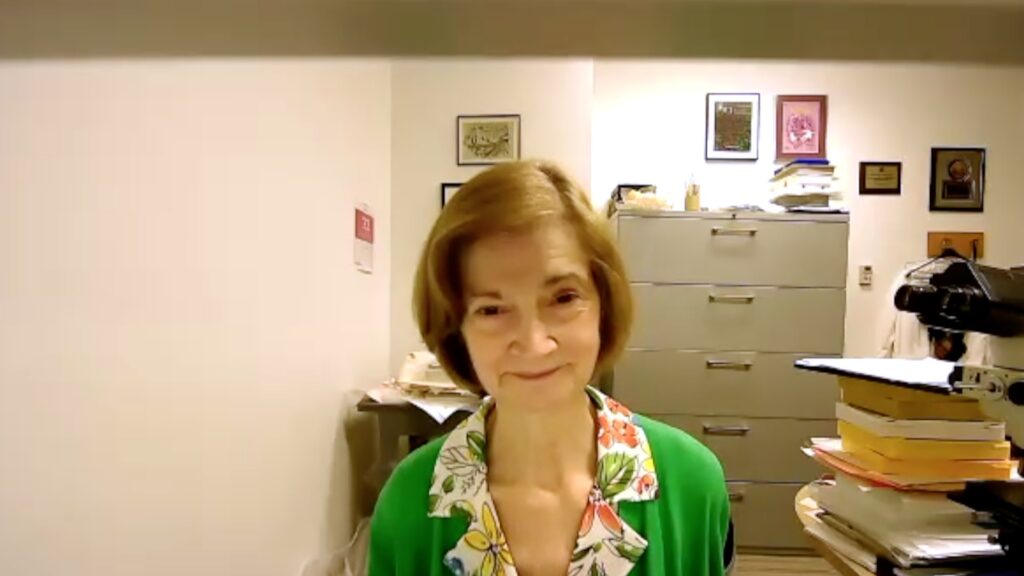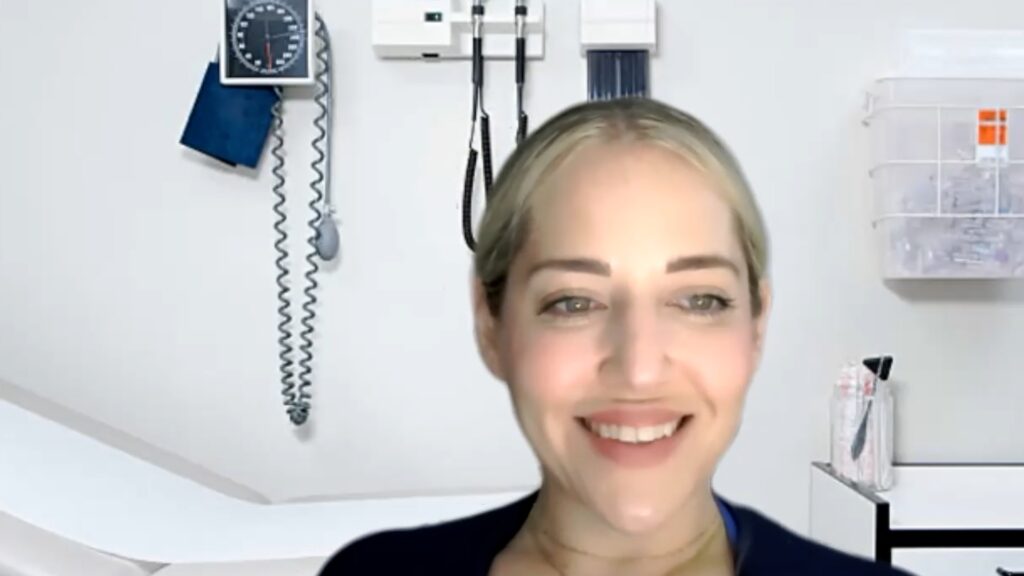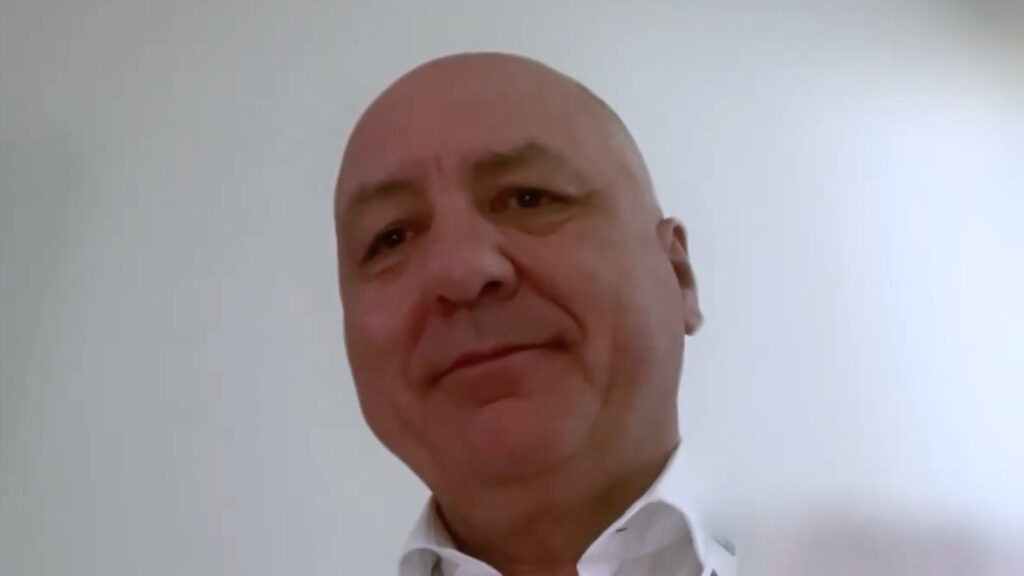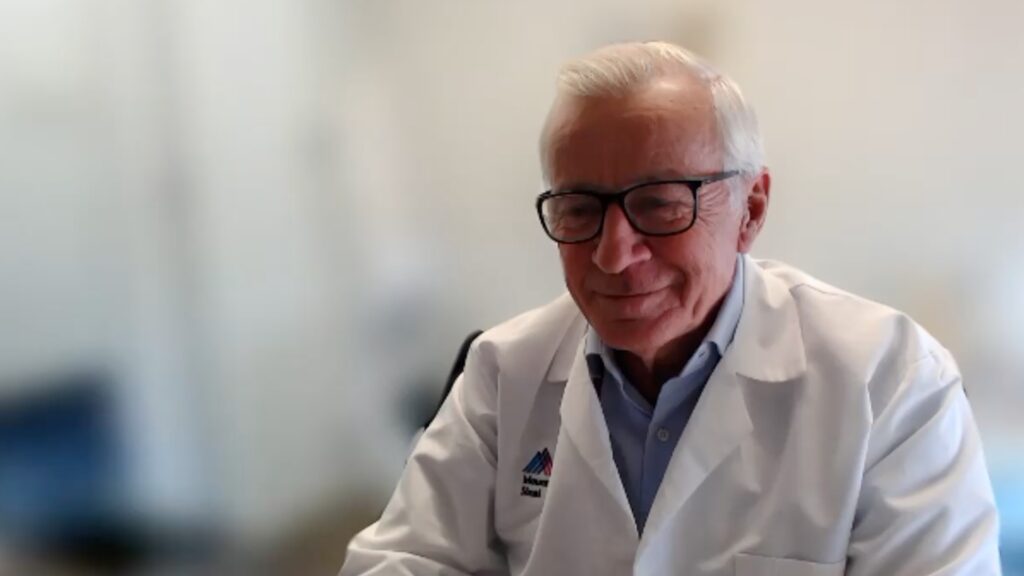The phase 3 LIBERTY-EoE-TREET study (NCT03633617) investigated the efficacy and safety of dupilumab in eosinophilic esophagitis. In this interview we spoke with Dr. Margaret Collins (Cincinnati Children’s Hospital Medical Center, Cincinnati, OH, USA) around her analysis of the phase 3 study looking at the eosinophil count and histologic score at 24 weeks of dupilumab 300 mg.
This information is brought to you by Touch Medical Media and is not sponsored by, nor a part of, the DDW.
The abstract ‘DUPILUMAB REDUCED EOSINOPHIL COUNTS AND IMPROVED HSS GRADE AND STAGE SCORES IN PATIENTS WITH EOSINOPHILIC ESOPHAGITIS: LIBERTY-EOE-TREET PHASE 3 STUDY PARTS A AND B.‘ (Abstract number: Sa1274) was presented at Digestive Disease Week 2023, May 6-9, 2023.
Questions
- Could you give us a brief overview of the findings from the phase 3 LIBERTY-EoE-TREET study? (0:24)
- What were the objectives and methodology of your analysis? (2:23)
- What were the findings in terms of eosinophil count and histologic score? (3:37)
- How will these insights optimise the use of dupilumab in this indication? (6:20)
Disclosures: Margaret Collins discloses consulting for Allakos, Arena/Pfizer, AstraZeneca, Calypso Biotech, EsoCap Biotech, GlaxoSmithKline, Receptos/Celgene/BMS, Regeneron Pharmaceuticals, Robarts Clinical Trials Inc./Alimentiv, Inc. and Shire, a Takeda company and serving on advisory boards for APFED, and CURED.
Support: Interview and filming supported by Touch Medical Media Ltd. Interview conducted by Victoria Jones.
Filmed in coverage of Digestive Disease Week 2023.
Click here for more content on digestive disorders.
Transcript
Could you give us a brief overview of the findings from the phase 3 LIBERTY-EoE-TREET study? (00:25)
The LIBERTY-EoE-TREET is a three part, parts A through C, phase 3 trial to investigate the safety and efficacy of dupilumab in adults and paediatric patients, ages 12 and older, with EoE compared to placebo. There are two primary endpoints, histologic remission less than or equal to 60 eosinophils in a high power field at 24 weeks and the change from baseline in the dysphagia symptom questionnaire or DSQ score at 24 weeks. There were also numerous secondary measures, outcome measures. Parts A and B were designed similarly and consisted of separate patient groups. All patients in parts A and B had an option to participate in part C for an additional 28 weeks for up to 52 weeks of treatment. The study showed that among patients with EoE, subcutaneous dupilumab administered weekly, improved histologic outcomes, and alleviated symptoms of the disease, versus placebo. The safety results were generally consistent with the known safety profile of dupilumab and improved in approved indications and the most commonly observed adverse events that occurred in greater than or equal to 5% of the participants were injection site reactions, nasopharyngitis, and rash. Results from parts A and B and preliminary findings from part C were published in the New England Journal of Medicine, and additional analyses of the data continue. I also recently presented this analysis at Digestive Disease Week, DDW 2023.
What were the objectives and methodology of your analysis? (02:22)
The analysis that I presented at DDW was conducted to further assess the effect of dupilumab versus placebo on histologic aspects of EoE in parts A and B of LIBERTY-EoE-TREET. In terms of the methodology, patients with EoE aged 12 and older were randomized one to one to dupilumab 300 milligrams weekly, or placebo weekly. We assessed the proportion of patients achieving less than or equal to 1, less than or equal to 6, or less than 15 eosinophils per high power field, and change from baseline and total histology scoring system or HSS grade and stage scores, which measure the severity as a grade score, and extend as a stage score of abnormality of the eight components of the HSS. The analysis included 42 patients randomized to dupilumab and 39 to placebo in Part A and 80 patients randomized to dupilumab and 79 to placebo in part B.
What were the findings in terms of eosinophil count and histologic score? (03:37)
Results of this analysis showed that dupilumab 300 milligrams dosed weekly significantly decreased eosinophil counts, and improved the severity and extent of histologic aspects of EoE as measured by the HSS in adults and paediatric patients 12 years and older with EoE up to 24 weeks versus placebo. Specifically, there were significant improvements in histologic response defined as less than or equal to 60 eosinophils in a high power field, where dupilumab versus placebo in parts A and B and all of those p-values were significant at less than 0.0001. And in addition, dupilumab significantly increased the proportion of patients reaching less than or equal to 1, and less than 15 eosinophils per high power field in Part A, with p-values of less than 0.05, and less than 0.0001. And in part B, and all of those p-values were less than 0.0001. The HSS grade and stage scores were also significantly improved at week 24 with dupilumab versus placebo with reductions from baseline in both grade and stage HSS scores. The maximum score for grade is 1, and for stage is also 1. The least square mean difference for grade and stage scores was -0.76 and -0.74 respectively for part A, and -0.68 and -0.67, respectively, for part B, with all p-values less than 0.000. Significant improvements were observed also for five histologic components of the HSS: basal zone hyperplasia, eosinophil inflammation, eosinophil abscess, eosinophil surface layering, and surface epithelial alteration. Those grade and stage scores were significantly improved with p-values of less than 0.0001 in both parts A and B. Significant improvements in dilated intercellular spaces in Part A and dyskeratotic epithelial cells grade and stage scores with p-value of less than 0.05 for each feature were seen in part B. Finally, the analysis showed that dupilumab was generally well tolerated.
How will these insights optimise the use of dupilumab in this indication? (06:19)
Clinical and histological improvements are important measures of the effect of treatment. The findings from this analysis show that dupilumab is very effective in improving well defined histologic and therapeutic endpoints of EoE, including eosinophil count and the severity and extent of the disease and oesophageal biopsies over time.
Subtitles and transcript are autogenerated









